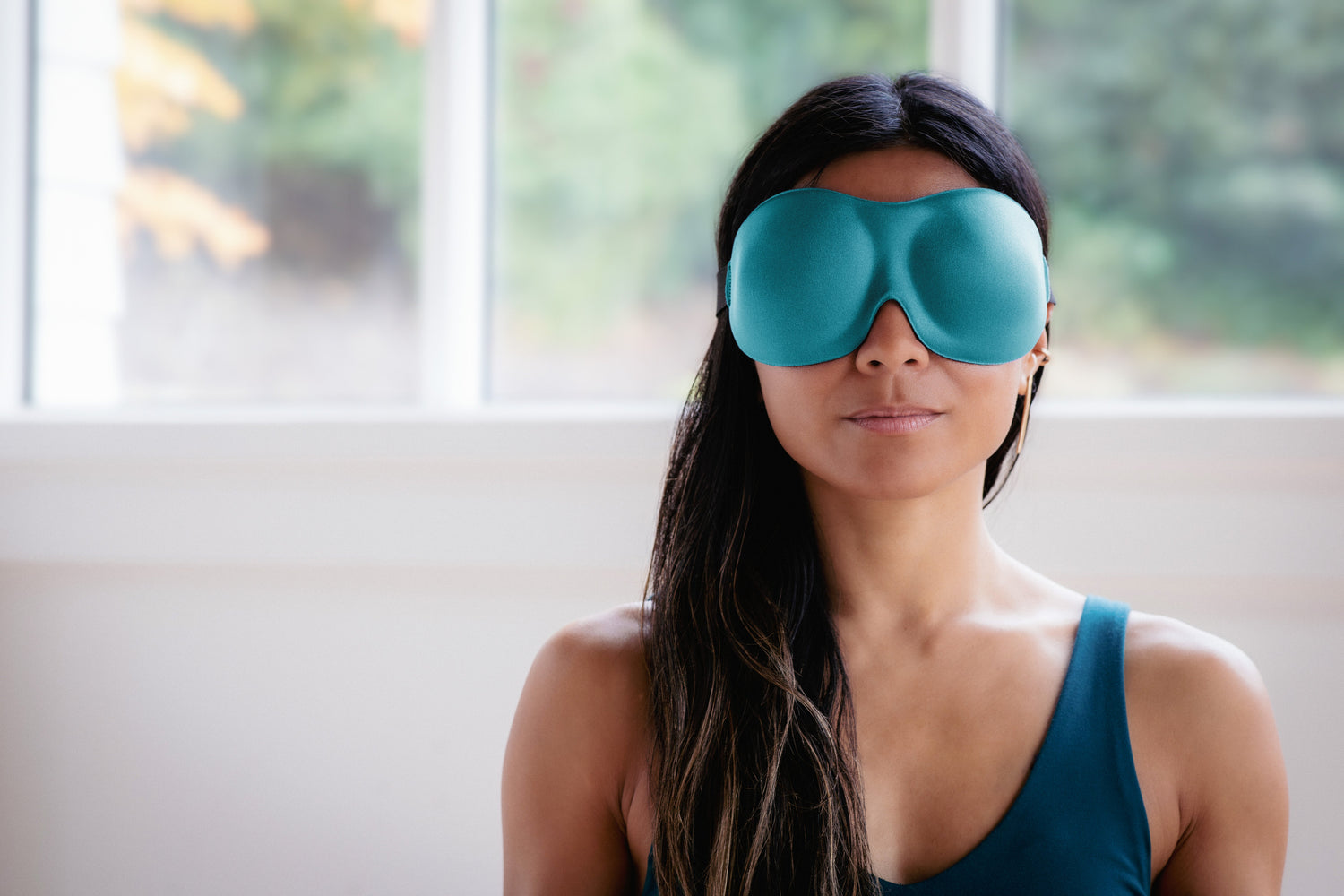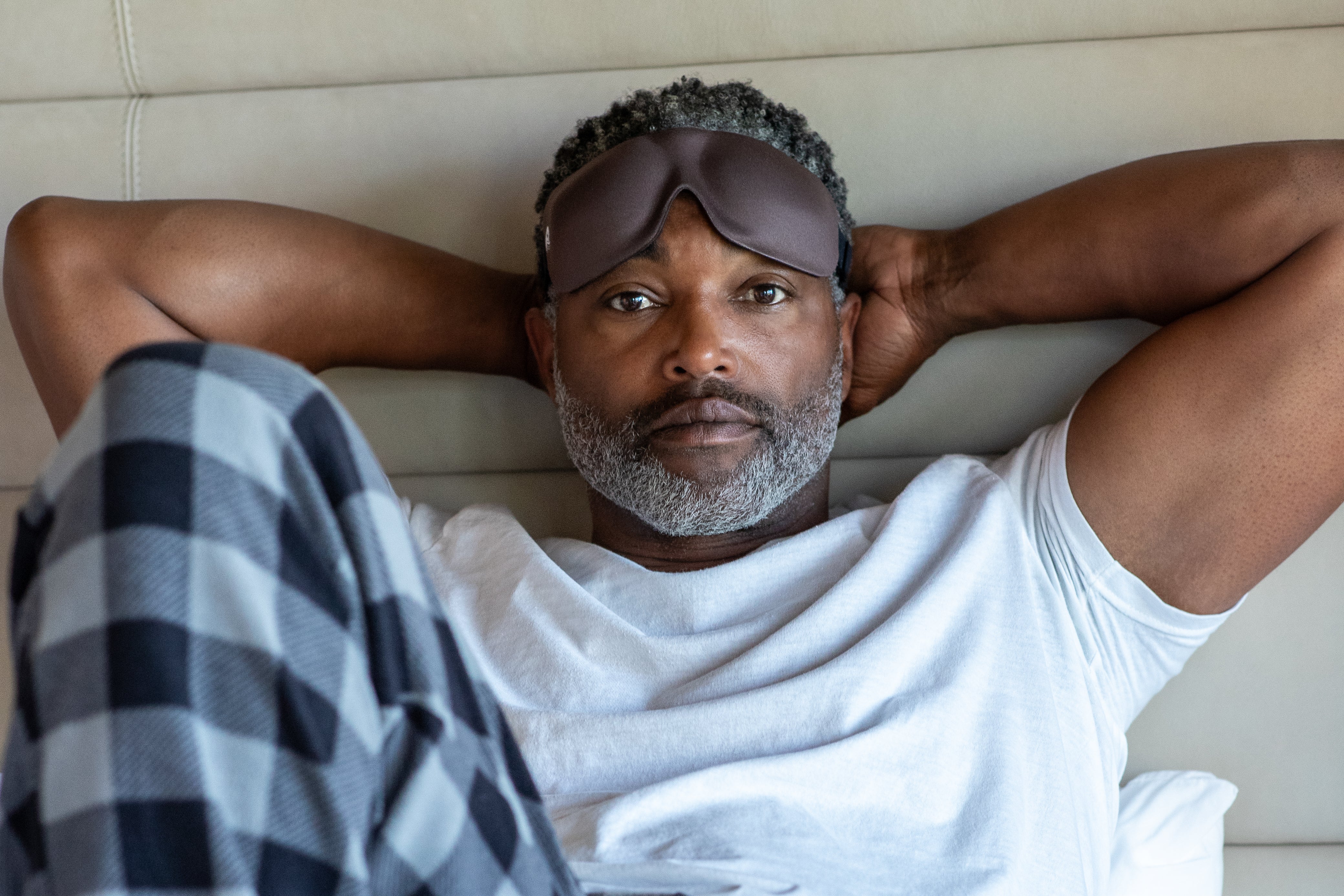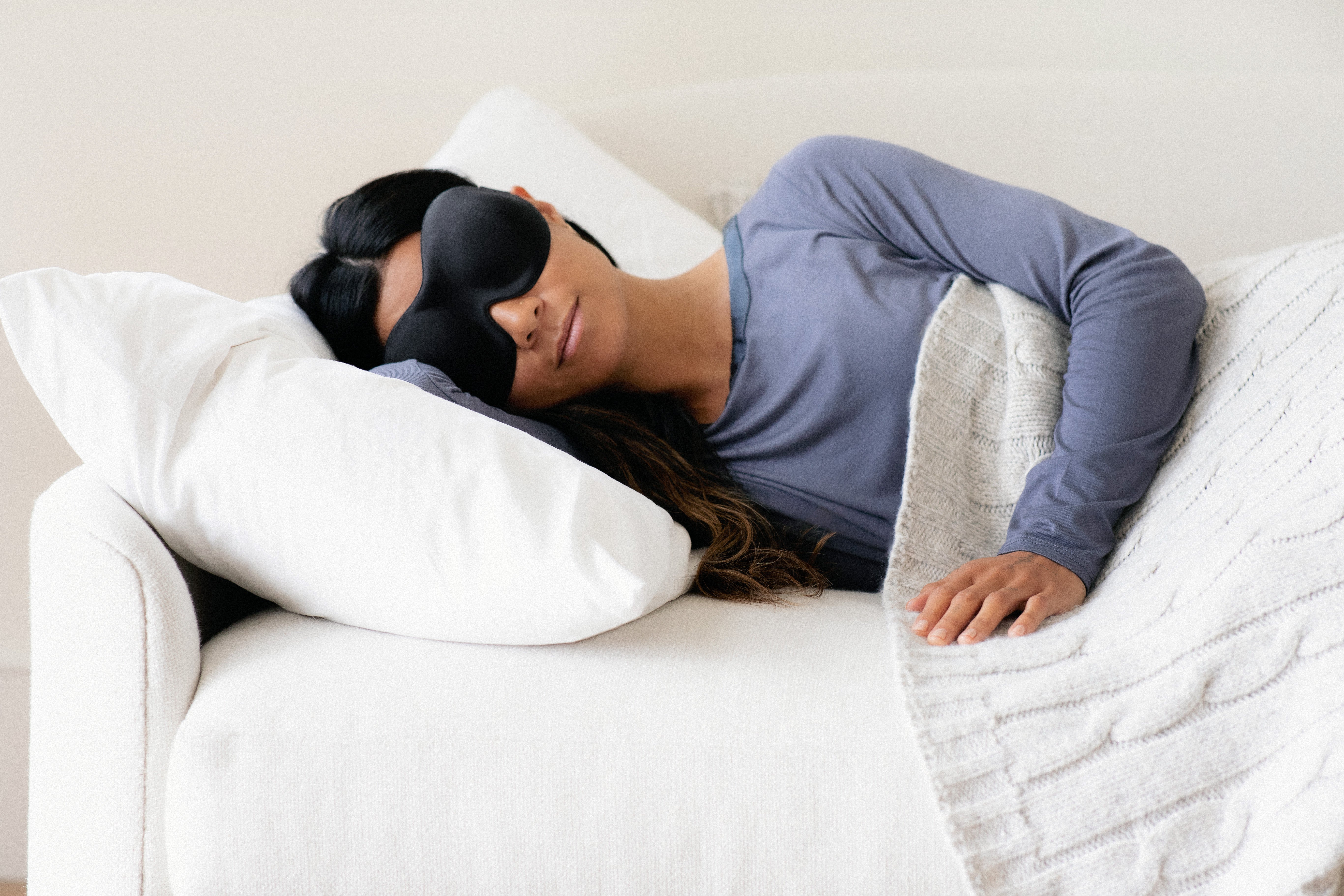If you travel for work, you already know the challenge. New time zones, unfamiliar rooms, cabin lights flicking on mid-flight, and hotel curtains that never quite close.
Yet your job still demands calm judgment and crisp focus the next morning.
The good news is that you can tilt the odds in your favor. Protecting deep sleep and REM sleep can improve attention, memory, and executive function. That adds up to better leadership in the moments that count.
This guide explains the science in plain language, then shows how a simple tool, a high-quality sleep mask, helps you keep sleep cycles on track anywhere you land.
The Science of Sleep and Brain Function
Sleep is not one thing. It runs in cycles of about 90 minutes that include light sleep, deep sleep, and REM. Each stage does a different kind of brain maintenance.
Deep sleep:
supports memory consolidation, cellular repair, and the clearing of metabolic waste. Many people notice that deep sleep productivity rises when they guard this stage. Mornings feel steadier, and complex tasks feel easier to sequence.
REM sleep
sharpens learning, pattern recognition, and emotional regulation. That is why protecting REM sleep for executives and founders is so valuable during high-stakes weeks.
Light sleep
acts like a bridge. You pass through it often, yet it is fragile. A stray light, hallway noise, or jet turbulence can wake you up here.
When travel disrupts circadian rhythms, your brain still seeks this 90-minute flow. Expose it to light at the wrong time, and your internal clock shifts.
This is why screens, bright hotel lamps, and sunrise in a new time zone can nudge sleep later or earlier than you intend.
It is also why many travelers wake at 3 a.m. local time and struggle to fall back asleep.
Here is the key takeaway: The quality of your sleep stages, not just the total hours, predicts how you feel at 8 a.m. Meetings reward clarity, not just willpower. Deep and REM-rich nights deliver that clarity.

Protecting REM and Deep Sleep Stages
You cannot control every variable on the road. You can control more than you think. Focus on three levers that protect the stages that drive cognition.
-
Light timing
Your brain treats light as a schedule signal. Morning light advances your clock. Late evening light delays it. If you land late and want to sleep sooner, dim the room, avoid bright screens, and use an eye mask in bed. If you need to wake up earlier in a new time zone, seek natural light after you rise.
-
Temperature and comfort
Cool rooms support deeper sleep. Aim for a comfortably cool setting and breathable bedding. If your hotel runs warm, use the fan setting, open the window if possible, or request a lighter duvet.
-
Predictable pre-sleep routine
Even on the road, repeat two or three anchors. A short stretch, a warm shower, or ten minutes of reading signals your body that sleep is coming. Consistency reduces sleep onset time, preserving more 90-minute cycles throughout the night.
Travelers also benefit from strategic power naps. Keep them short, about 15 to 25 minutes. Long afternoon naps can cut into deep sleep at night. If you must nap longer after a red eye, set two alarms, then get daylight exposure when you wake.
Finally, watch stimulants and alcohol. Caffeine later in the day narrows deep sleep. Alcohol may help you doze, then fragments REM after a few hours. On important trip days, trade the nightcap for a calming tea or sparkling water.
How a Sleep Mask Helps Maintain Sleep Cycles
Light is the easiest sleep disruptor to fix. A well-made eye mask blocks ambient light on planes and in hotel rooms. It also keeps light aligned with your new schedule rather than the airplane crew’s or the city's sunrise. That one change protects both deep sleep and REM windows.
A contoured design is especially helpful for frequent flyers. Here is what to look for, and how the Nidra design supports focus on the road.
Full blackout without pressure
Contoured eye cups create space for blinking and REM movement. Your lashes do not rub. That comfort reduces micro awakenings and helps sustain each 90-minute cycle.
Adjustable, secure fit
An adjustable strap that stays put through side sleeping keeps darkness consistent. Consistency helps your brain stay in deep sleep longer, which supports next-day problem-solving and deep sleep productivity.
Lightweight and breathable build
Soft, breathable materials reduce heat and skin irritation. When your face stays comfortable, your nervous system stays calmer. Calm makes it easier to drift into REM.
Travel-ready durability
Reinforced stitching, smooth edges, and a compact profile matter when you pack and unpack daily. A mask that holds its shape is a mask you will use on every segment. Reliability supports habits, and habits protect sleep.
Many travelers tell us they choose a Nidra sleep mask for focus on big presentation mornings.
That choice is practical. Darkness shields your circadian system from stray light so you can align bedtime and wake time to the day you need to lead. For executives with global teams, guarding REM sleep is not a luxury. It is a tool for steady decisions.

Quick Start Routine for Travel Weeks
Use this simple five-step plan on your next trip.
-
Set your sleep target before you fly:
Pick a consistent bedtime and wake time for the destination.
-
Mask and ear protection ready:
Put on your mask as soon as the cabin lights change from bright to dim, not only at bedtime. Keeping exposure predictable helps your brain settle.
-
Hydrate, then power down:
Two hours before sleep, switch from coffee to water. Thirty minutes before sleep, dim screens or switch to audio.
-
Cool and dark at the hotel:
Lower the thermostat a few degrees, close curtains, and use your mask to block the last gaps.
-
Morning light and movement:
Ten minutes of daylight and a short walk after waking up in the new time zone.
This routine travel proves your sleep cycles. It also creates a repeatable system you can run in any city, on any schedule.
How Better Sleep Shows Up At Work
Leaders notice improvements in three areas after a week of protected sleep stages.
-
Sharper focus in long meetings. Deep sleep restores mental energy. You listen longer, capture nuance, and switch tasks with less friction.
-
Faster pattern recognition. REM helps you connect dots across projects. Strategy work feels less cloudy, which supports confident decisions.
-
Calmer emotional tone. Stable REM means a steadier mood. You respond rather than react, which improves collaboration and trust.
These gains compound. Protecting sleep on travel days supports better choices that reduce rework and stress. Less rework frees time for what matters. That is a leadership loop worth building.

Why Craftsmanship Matters
A sleep mask is a small accessory, yet the details shape your experience. A precise contour over the eyes prevents light leaks at the nose. Smooth, resilient foam keeps its shape after dozens of flights.
Gentle, low-profile straps avoid tangles in hair and sit comfortably under headphones. When a product is built this carefully, you use it night after night. Consistent use is how you protect deep sleep and REM over time.
Nidra focuses on that quality because it translates into real-life outcomes. More rested travelers make clearer choices, lead steadier teams, and feel better doing it. If your goal is a Nidra sleep mask for focus during travel-heavy quarters, craftsmanship is not a nice-to-have. It is the reason the tool works.
Final Thoughts and Next Steps
You do not need perfect conditions to sleep well on the road. You need a smart plan. Protect light timing, keep your room cool, repeat a simple wind-down, and use a contoured mask to maintain darkness.
Start on your next trip. Track how you feel at 10 a.m. and 3 p.m. Notice if deep work blocks come easier, and if decisions feel less effortful. That is deep sleep productivity in action, and it is available to you wherever you travel.






Leave a comment
This site is protected by hCaptcha and the hCaptcha Privacy Policy and Terms of Service apply.